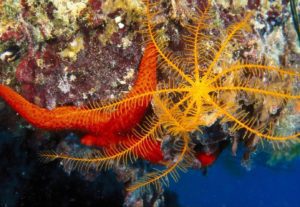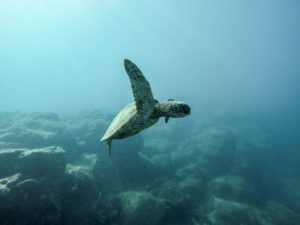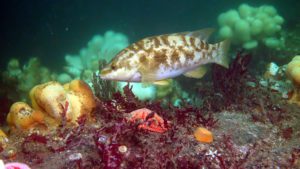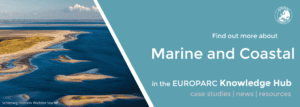Workshop outcomes: Why does our marine environment merit special attention?
Kornati National Park (HR) © Photo Najada Diving Ltd
During the ONLINE Conference 2020, EUROPARC held 8 thematic workshops to discuss diverse topics related to practice and capacity building in Protected Areas (PAs). In case you have not attended, or want to remind yourself of their outcomes, a series of articles summarises the content of some of these workshops.
Marine Protected Areas
The Marine workshop welcomed 22 participants from different backgrounds. At the start of the session, a short overview reminded us the importance of biodiversity in our lives, the main factors that are contributing to its decrease and how the Biodiversity Strategy aims to halt the biodiversity lost.
Especially, a brief review of the Biodiversity Strategy 2010’s targets concerning the marine environment was done, which stated that at least 10% of the sea surface should be protected by 2020, and a comparison of the goals with the current protections status.
Download the workshop introductory presentation delivered by Fernando Pinillos and Stefania Petrosillo from EUROPARC.

Torre Guaceto Marine Protected Area (IT) – Park Archive
A short review of the recently published Biodiversity Strategy 2030 followed with its implications for the marine environment and the management of Marine Protected Areas. This new release of the Biodiversity Strategy states three key aspects to be reached by 2030 that we considered of particular interest for the designation and management of MPAs across Europe:
- Increase the protection of the sea surface from the previous 10% to a 30%;
- Strictly protect the 10% of the marine surface;
- Achieve effectively managed MPAs.

Photo: Jeremy Bishop
These three aspects raise different questions regarding the meaning of those protection levels – should the 30% be a common goal all over Europe, or for each region or country? Does strict protection mean no human activity is allowed, or no extraction, or any other meaning? What does effectively managed mean, and how it is measured?
These different concerns were raised after the introduction and discussed with the participants. Among the questions and comments received, the most important were related to the following:
- Should the 30% be a common goal all over Europe, or for each region or country?
- Does strictly protection mean no human activity is allowed, or no extraction, or any other meaning?
- What does effectively managed mean, and how it is measured?
LIFE INTEMARES project
“Needs and competencies for building the capacity of Marine Protected Area managers and stakeholders involved LIFE IP INTEMARES project (Spain)“ by Paloma Pacheco (LIFE IP INTEMARES project Coordinator).
INTEMARES project has scheduled 50 actions to be undertook before 2024, and has coordinated the design of over 80 MPA management plans, constituting one of the biggest integrated projects of this kind in Europe.
In this presentation, Paloma Pacheco explained how the INTEMARES project targets to designate and manage Marine Protected Areas in Spain covering the 18% of the sea surface of this country. Furthermore, she detailed how, through a participatory process that took place from 2017 to 2019, involved 2000 entities and used the Collective Intelligence software, they managed to identify the obstacles and needs that MPA stakeholders will need to overcome for an effective management of marine sites.
Discussion on capacity building
After the presentation, the floor was given to the participants that wanted to contribute and give answers to questions such as the implications of the Biodiversity Strategy 2030, what capacity building tools and programmes are needed for an effective MPAs co-management at all levels, and what practical competencies Protected Areas staff need to be able to do their work.

Ballan Wrasse, Arran Coast – photo by Howard Wood
Among the workshop outcomes, some relevant aspects were highlighted:
- Among the restoration actions, there is a need of rewilding big mammals and top predators, as their populations have decreased and they play a crucial role for a good functioning of ecosystems;
- The necessity of designating ecological corridors, and to set specific actions/legislation framework for transboundary areas and ecologically connected areas, as this is not only stated in the Biodiversity Strategy but also a known need to protect high mobile species;
- Lack of funding is not always the first issue when it comes to effective MPA management – this was collected during the INTEMARES participatory process. However, funding is necessary when immediate enforcement measures should be put into place;
- Among the different competencies that MPA managers and stakeholders should be trained in, conflict resolution is one of the priorities.
- Among the needs identified to effectively manage MPAs, it is critical to manage stakeholders expectations and to allow them to sit together to establish a conversation.
- Among the tools needed to improve competencies of MPA managers and stakeholders, is important to develop communication tools and active learning methodologies.
- Among the impacts arising from the new Biodiversity Strategy, it is important to differentiate between three levels of action, each of which requires different competencies:
- Designation of MPAs;
- Management of MPAs;
- Effective management of MPAs.
